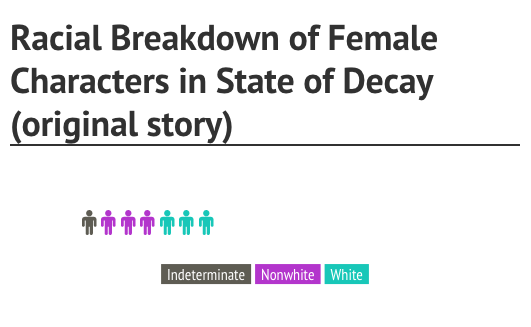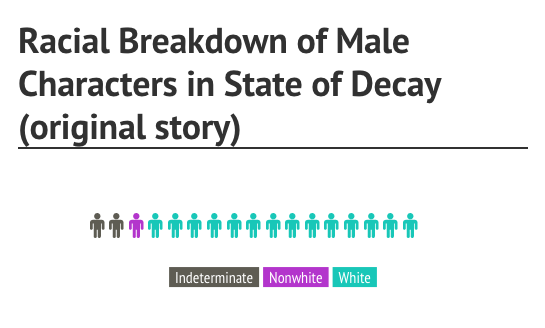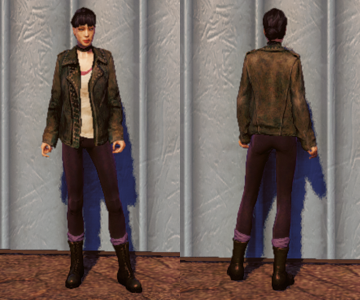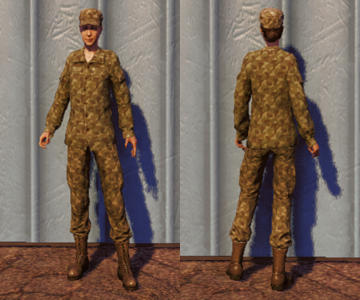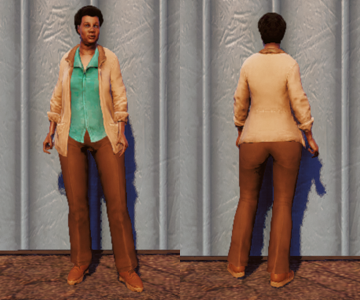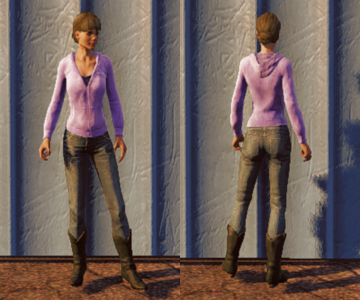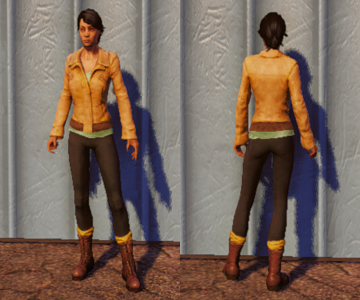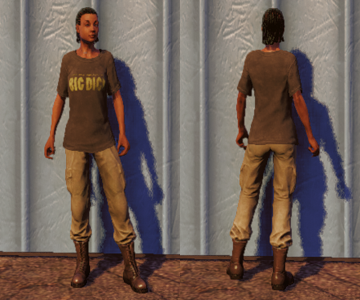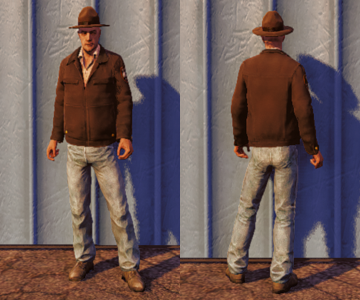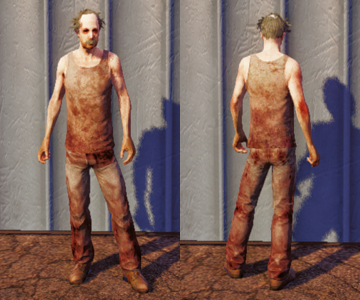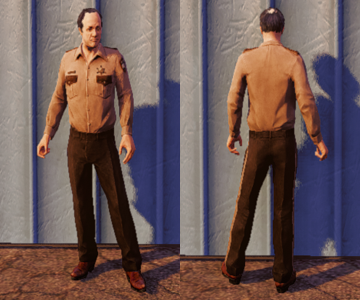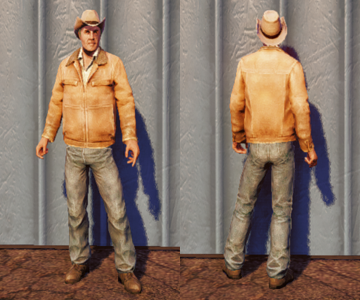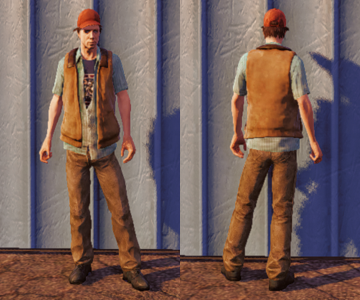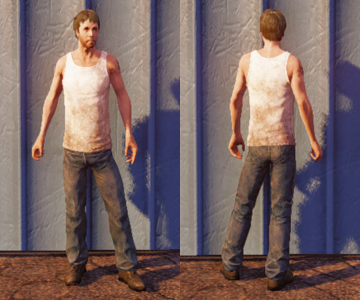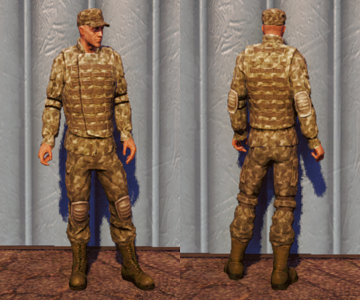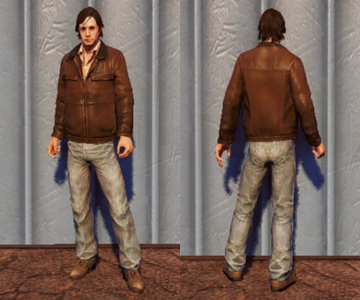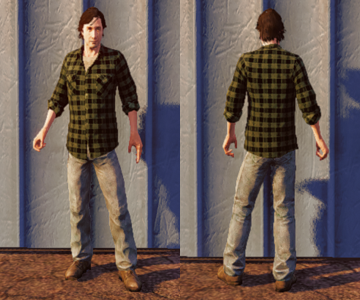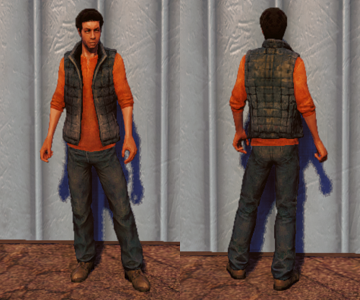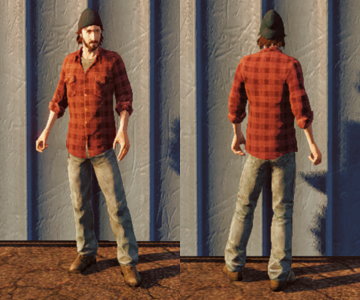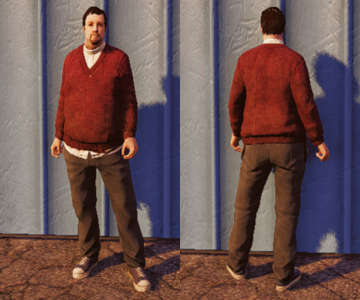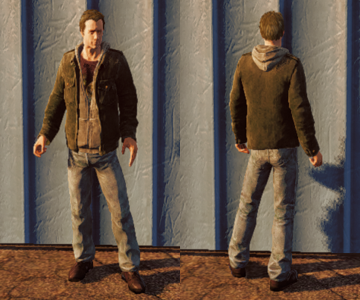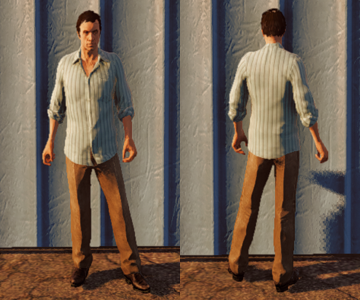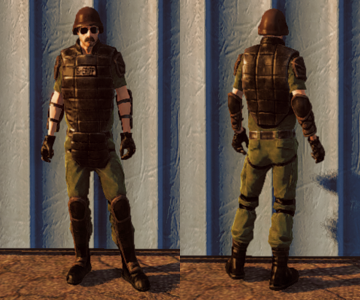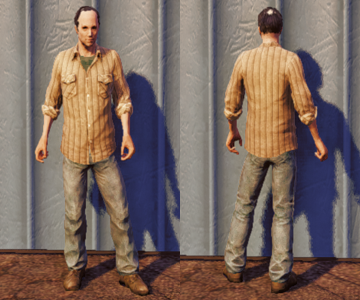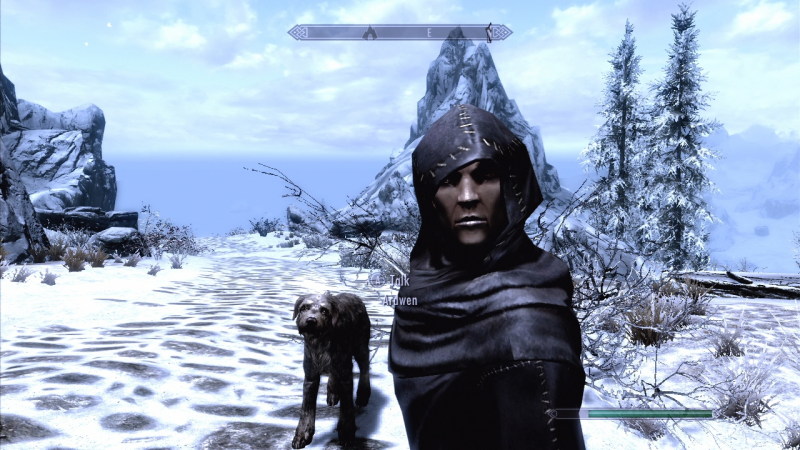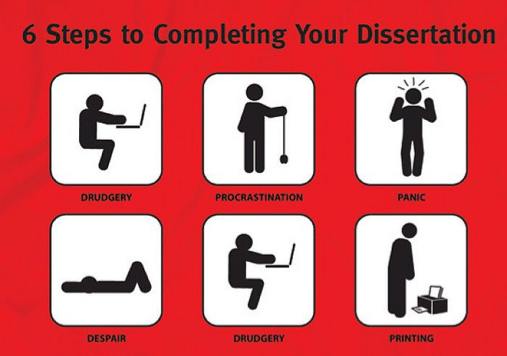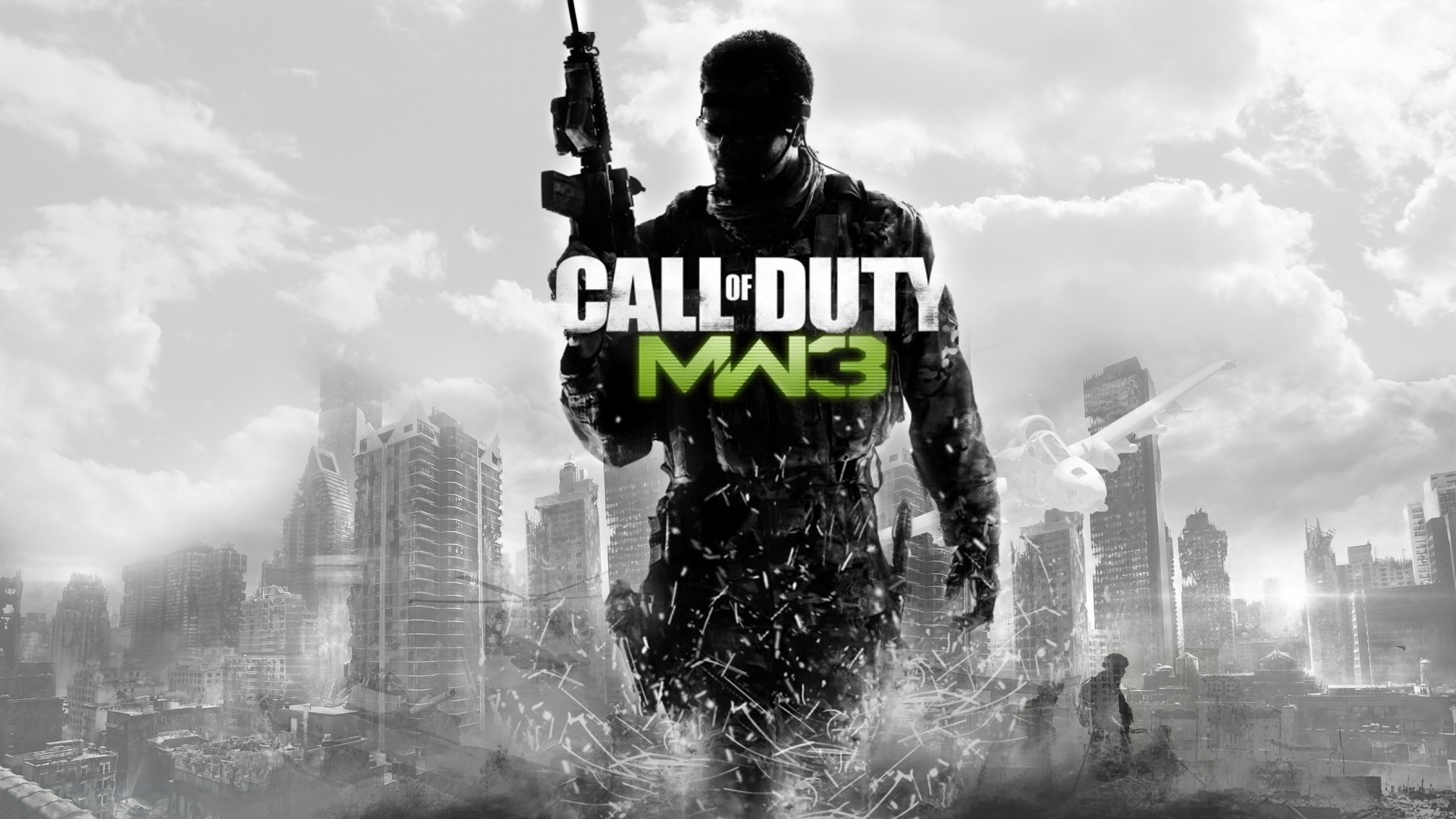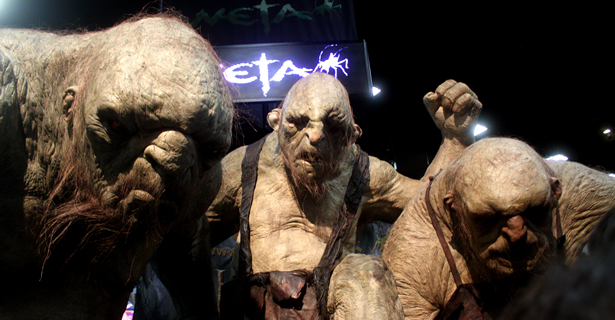State of Decay feels very diverse; you begin story mode as a black man and the first person who joins you and your friend is a Latina. In Lifeline, you begin as a female soldier fighting alongside a Hawaiian man and a black man. Often, in Breakdown, it’s easy to play with a largely female community. In these moments, it feels like a game doing things right. But is State of Decay as diverse as it feels? As part of my series looking at character models in the original game and unpacking different ideas of representation, I set out to explore racial breakdowns in the game. Of course, since I’m working from visuals only, and because different things happen sometimes with the same character model, as I’ll discuss later, this is imperfect research; many characters are of indeterminate racial makeup, which while interesting in and of itself, is not helpful in dividing characters into categories. I also may not have a full view of skins, even in the original game, though I can at least say this is all story characters. Still, it’s the best method I have, since I don’t have a gaming PC or a PC version.
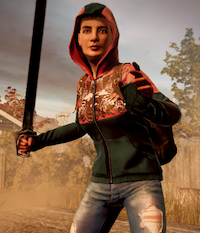
I was surprised to find that the numbers weren’t as positive as I expected. I’ve long praised the diversity in State of Decay, so imagine my surprise when I realized there were no black female character skins outside of the two story characters, who are also available as Breakdown heroes. This means you’re not going to encounter any random black women in any enclaves around the map in story mode. Of the 78 non-story male characters I looked at, only four were black males (one may have been, but I could not have definitively said). This is a game in which many of the story characters are nonwhite, which has added people of color at every turn — in fact, a bonus character added in Breakdown was a black male, and the bonus character added with the release of the Year One Survival Edition is an Indian woman, Gurubani Kaur. Later, with Breakdown, we got Zeika, who is dark-skinned, as well. But in all the skins I found, after scouring online sources, and as I thought back over my story playthroughs and Breakdown sessions, I couldn’t recall finding any random black women.
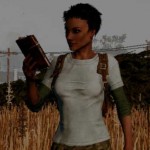
State of Decay does do well presenting people who seem to be darker-skinned in general; the aforementioned Maya Torres is but one of several seemingly Latina skins, for instance, and we see a similar distribution on the male side, and there’s a lot of variation in skin tone, which is nice to see. When we look at story characters? The division is quite equal, at least among the women:
Fully equal, with Becca Collins as the indeterminate character. We know “Becca” is a pseudonym and she appears to be possibly Asian, though we may be able to get a better view of her face with some effort in the new edition, with its cleaner graphics and greater facial detail. With male story characters, however, the distribution isn’t as even:
As a note, because I work purely off visuals for these explorations, I cannot definitively mark Ray Santos as nonwhite, though he very much seems to be within the game. If you showed me his character model and I knew nothing of the game, I would list him as white, possibly indeterminate at best.
I want to stress that I think Undead Labs is doing very good work in this direction, for the most part, and it’s gotten better with successive modes. Breakdown added more variety, as did Lifeline, and many of the major characters, the people who move the story, are nonwhite; many are women; some are nonwhite women. I think with the background character skins, it simply became a matter of resources, small acts of recoloring to save time and development costs. Many of the background characters are palette swaps, or simply have a detail added, like a hat. But I’m not sure that’s better. Do we lose some level of richness of diversity if we’re just darkening skin tone a little and keeping the same voice actress as another white character? I’m not sure; this raises a question I can’t answer, but one I’m willing to chew on.
I’ll say this: regardless of numbers, State of Decay feels more diverse than most games I’ve played, not only for the reasons above, but also because a gay couple is the focus of a story. We do see different body types. Class and social issues are addressed. Illness is confronted from several angles. This game does a lot of things right, and overall, creates a world I feel at home in, moreso than I do in many games. How, then, do simple background palette swaps figure in? I don’t know; this question is bigger than I am. I will go on building my mostly-female teams in Breakdown while I think on it.
This piece was written for Critical Distance’s Blogs of the Roundable “Palette Swap” prompt, and the exploration continues in part two.

